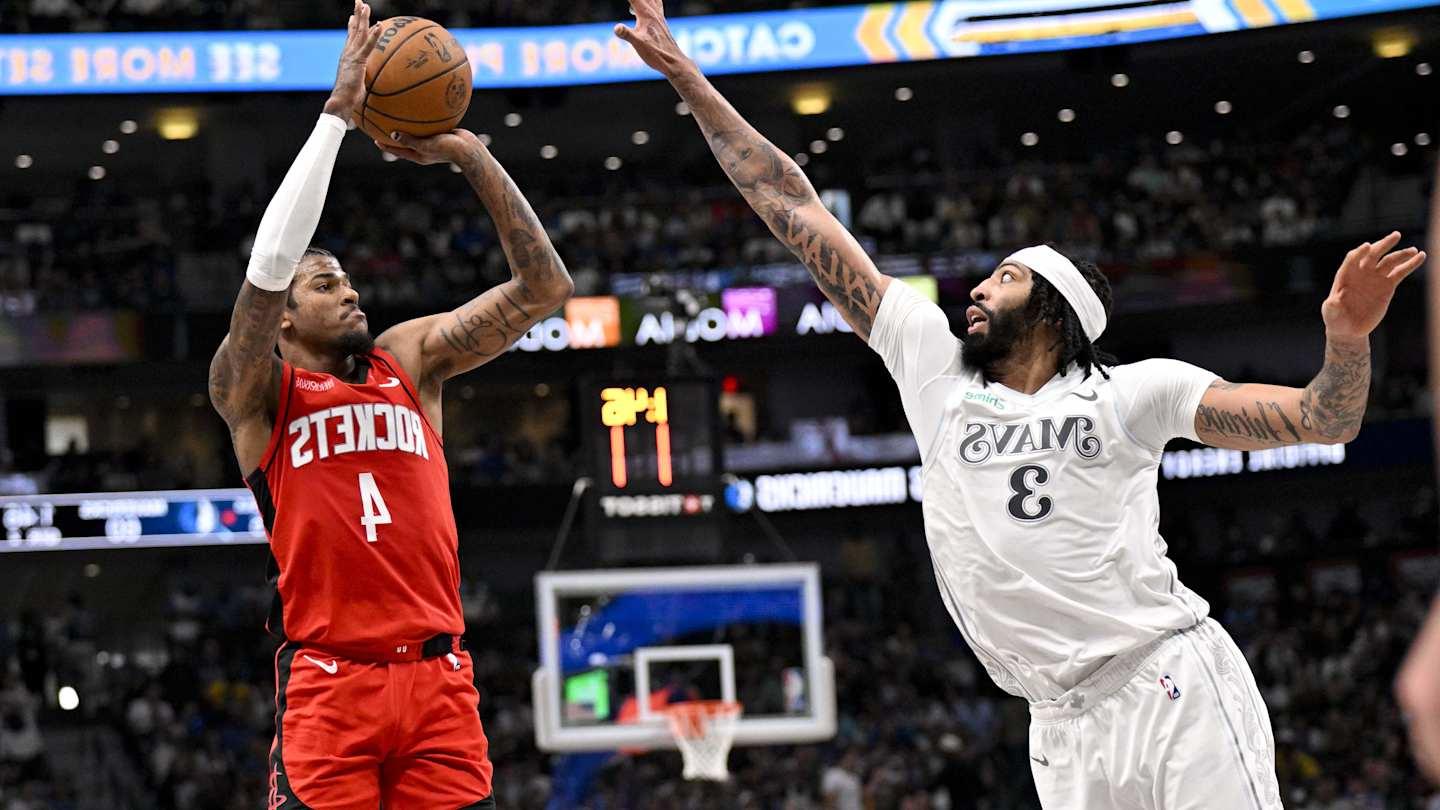TubiTV Just Hit 200 Million Users – Here’s Why
10 Perfect-Score Shows Buried on Prime Video Right Now
At the start of December, a particular NBA game highlight rapidly spread across the internet. The footage showcased a sequence from the fourth quarter of a game broadcast nationwide featuring the Los Angeles Lakers and Phoenix Suns. It depicted what many would describe as a low point in basketball: nine plays resulted in nine attempted three-pointers, with none successful. Why have you stopped watching the NBA? one caption queried. Here’s the reason.
The $3.99 Streaming Service With 500+ Oscar Winners Nobody Knows About
Cancel These 3 Subscriptions Before November 1st – Here’s Why
Despite such criticisms, NBA viewership remains robust. The league’s Christmas Day games attracted an average of 5.25 million viewers. The clash between the Lakers and the Golden State Warriors, marking another chapter in the rivalry between LeBron James and Stephen Curry, drew nearly eight million viewers. Additionally, an early January game between the Oklahoma City Thunder and Cleveland Cavaliers, held in cities not traditionally known for basketball, saw a viewership of 1.87 million, a 20% increase from the previous season. Moreover, the NBA has recently secured a new media rights agreement worth $76 billion over the next 11 seasons.
Nonetheless, concerns linger about the growth of the game. “There are moments when the game is a spectacle of beauty, and then there are moments when it is just the opposite,” commented Milwaukee Bucks coach Doc Rivers. Ex-players have voiced dissatisfaction, pointing out that games often devolve into mere three-point shootouts. Indeed, the number of three-point attempts has surged to unprecedented levels. Boston is on track to break the record for the average number of attempts in a season, with five teams possibly ending the season attempting at least 40 three-pointers per game. In the 2004–05 season, Phoenix had the highest three-point attempt rate at 28.9%. This season, even the team with the lowest rate, Denver, has nearly 35% of its attempts from beyond the arc. “For those who love traditional basketball,” said Nuggets coach Michael Malone, “this is probably not the preferred style of play.”
The NBA, however, disputes the idea that the increase in three-point shots is an issue, arguing that concerns about the rise are exaggerated. While three-point attempts have increased, they note, the increase is slight compared to the past three seasons. The rise in three-pointers has come at the expense of mid-range jump shots, which have decreased slightly. Shots near the rim remain a significant part of the game. “I wouldn’t simply call it a three-point shooting problem,” said NBA Commissioner Adam Silver. “We’re considering the skill levels on the court, the variety of offensive plays, and how fans perceive the game.”
According to league insiders, the issue isn’t the three-point shot itself but rather how these shots are generated. “It’s not the Celtics with their fluid ball movement that are the problem,” stated Detroit Pistons coach J.B. Bickerstaff. “It’s beautiful when there’s penetration, a kick out, and then swing passes. The issue arises with teams that lack movement off the ball and rely heavily on analytics to justify increasing three-point attempts. Too often, we see stagnant one-on-one play, where the ball hardly moves and everyone else just watches,” Bickerstaff added. “You see teams that just shoot without playing defense. Those aren’t the games I want to watch,” Rivers echoed.
Regardless of how it’s portrayed, the league acknowledges there is an issue. “Offenses can appear somewhat monotonous,” Silver admitted. “What we’re hearing from fans is a desire for more stylistic diversity on the court,” he noted. However, finding solutions is challenging. In a recent conversation with reporters, Silver encouraged suggestions. “I’m eager to hear all your thoughts on the changes we should consider,” he stated.
Well, Adam, since you’re asking for input…
Adhere to Existing Regulations
Coaches concur that enforcing existing rules could alter the dynamics of the game. For instance, the defensive three-second rule, which mandates that any defender in the paint must actively guard an opponent within three seconds, is often overlooked. More rigorous enforcement could discourage perimeter play and encourage more drives to the basket, reducing the reliance on three-point shooting. “We could see more plays directed towards the rim rather than settling for threes,” noted a seasoned assistant coach.
Other overlooked rules include more stringent calling of illegal screens and traveling violations, particularly when players adjust their pivot foot off screens. “We don’t need major overhauls,” the assistant added. “Simply enforcing the rules we already have would make a significant difference.”
Reintroduce Hand Checking
In 2004, the NBA sought to increase offensive action by severely limiting hand and forearm checking, particularly on the perimeter. This change led to a significant increase in scoring and ushered in an era focused on offense. It might be time to reconsider this approach. Allowing more physical defense, including hand checking beyond the three-point line, could encourage more varied and strategic play, potentially shifting the focus back towards inside play. “It won’t return us to the low-scoring games of the past—today’s shooters are too skilled—but it could balance the scales a bit,” the assistant suggested.
“I do miss the era of dominant low-post players,” Bickerstaff remarked. “Back when you could pass the ball inside, draw a double team, and see how the defense rotates before deciding on a three. That’s the kind of play I watched growing up with stars like Patrick Ewing and Hakeem Olajuwon.”
Limit Successful Three-Point Shots
“If I thought there was a simple, quick fix,” Silver remarked, alluding to a proposed rule in Major League Baseball allowing teams to choose any batter once per game, “I would immediately suggest it.” Perhaps imposing a cap on successful three-point shots—say, a maximum of 15 per game—could be that solution. This rule would compel teams to be more selective with their three-point attempts, preserving them for later stages of the game. While implementing such a rule could complicate matters, and the NBA is wary of further confusing its fans, particularly with the new in-season tournament format, it might be a way to reduce the prevalence of three-point shooting.
Expand the Three-Point Line
In an early effort to boost scoring, the NBA shortened the three-point line by 21 inches in 1994. Rod Thorn, then an NBA vice president, described the game at the time as becoming too much of a “grappling match.” The experiment led to an increase in three-point attempts but did not significantly enhance overall scoring, prompting the league to revert to the original distance in 1997. Would moving it back again make a difference today? It’s possible that increasing the distance between the three-point line and the basket could create more space for players to operate while making the three-point shot more challenging. While it may not affect long-range specialists like Curry or Trae Young, it could influence the shooting decisions of others.
Similar posts:
- Celtics Coach Joe Mazzulla Claps Back at NBA Scoring Critics!
- Heave Rule Reveals 36-Foot Cutoff In 2025, Here’s Why Player Stats Shift
- Cooper Flagg Calls NBA Summer League Debut His Worst Game Ever!
- Colin Cowherd’s Bold Plan to Solve NBA’s Three-Pointer Crisis!
- NBA Reveals Team-Only Heaves for 2025-26 – Why Shooting Stats Shift

Mike Johnson is a passionate news writer with a keen interest in current events. With over a decade of experience in journalism, he has a talent for uncovering the stories that matter most. Mike’s insightful articles and in-depth analyses have made him a trusted voice in the industry. He thrives on staying ahead of the news curve, providing readers with timely and relevant information. Whether it’s breaking news, politics, or social issues, Mike’s dedication to the craft ensures that his readers are always well-informed.

